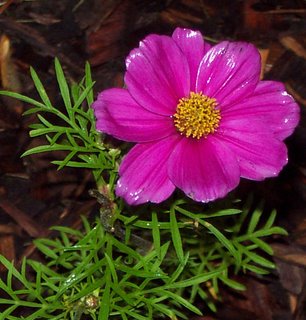
Across all scales of life, a pivotal feature is "unity with diversity."
This problem is a recognized central problem in health care systems, for example, where there is a visible tendency for specialization to break the world up into "silos" of expertise and common world-views. The silo form is critical to establishing a small context within which a huge amount of information is shared and doesn't need to be explicitly stated, making terse conversation possible within the team.
Unfortunately, exactly the same words fall on deaf ears, or are totally misunderstood outside the silo, because the unstated assumptions and world-view are different.
A common response is something like "We need to get rid of silos!" followed by an attempt to "standardize" or, effectively, homogenize conversations - which only works where it can reduce conversations to the least common denominator.
The problem needs to be framed instead as "We need a way to allow silos to continue to exist, but for people within them to still be able to communicate across silos." In other words, we need the benefits of detailed specialization and the benefits of larger-scale coordination, both.
The exact same problem occurs in machine-vision, or processing of, say, microscope images of histopathology slides of cross section of a blood vessel. We need very high resolution to see enough of the important details, but we also need a high width field-of-view to be sure we're not looking at some statistical anomaly. For images, this can be solved by collecting the images, matching up the edges, and pasting them together to form a huge mosaic that has both the field of view and the necessary detail.
We haven't been able to do the analogy with health care organizations yet, but we need to.
Should this be possible? Well, we all walk around with a living example - our own bodies. Our bodies have trillions of cells, with great specialization in different areas for different purposes, and yet with a common identity and purpose. Our bodies exhibit the type of "unity with diversity" I'm referring to.
On a scale larger than cells, or organisms, or corporations, we have national and global needs as well to accomplish "unity with diversity." We need to treasure our global diversity, as it is rich with information and value, not to ignore a great variety of music and food. It is rich as well in different perspectives and world-views.
A bad strategy to accomplish "world peace" or conflict elimination is to attempt to homogenize the world into any one framework or cultural system. This strategy is effectively "the Borg", and the same as "eliminating silos." It won't give us the differing perspectives we need to survive. It removes the necessary ecological complexity. For species, simplification and homogeneity turn fatal at the next turning of the road, and change of conditions. It's like having all elm trees in a country, then catching Dutch elm disease. It's a very bad strategy.
What we need instead is the same type of "diversity within unity" that our own bodies exhibit, mathematically. ( I don't mean we should paste people together into a global sized blob of protoplasm!)
What I'm talking about here is really the key issue behind multi-cellular organisms, and why those are successful models for our bodies and our corporations. Nobody wants "the Borg", but nobody wants World War III either. As the world gets smaller at a visible rate, we are forced to confront these hard issues.
To accomplish that, as discussed in my prior post, we need to learn how to communicate between silos, across world-views. Then, we need to move up the scale to learning how to coordinate across them. Then we need to move up to collaboration across silos, as in "Getting to Yes." Finally, we need to move up to coherence of spirit across silos, where we all finally realize that we need to work together to survive here, and the solutions do not consist of killing off each other and trying to impose homogeneity and false-unity.
We need a healthy, organic unity of shared purpose and identity, but one that is above and crosses over different organizations and specializations and local world views, and still allows them to exist largely independently.
It can work. It does work in our bodies. In my mind, this is the challenge of the "life sciences" and what is the key ingredient in accomplishing the social cohesion necessary for health, both individually and economically of the nation.
This is one area where specialists from across the spectrum of science and business can get together in a true interdisciplinary effort, because the problem is, effectively, fractal or self-similar in nature. We see the same problem at every level of the totality of life-on-earth.
That's great, because it means we do have common ground there to compare notes and cross-fertilize the search for solutions. It's also great because the need for economic survival and large sources of funding are aligned with a need for global survival of that context in which we compete for resources. If the lifeboat we share goes down, we all lose.

So, we do have a common ground, and a common problem to solve together. The interdisciplinary value of that solution can structure and give meaning to our efforts
to find this "win-win" strategy. And we better, because the alternative is a "lose-lose" one.
No comments:
Post a Comment